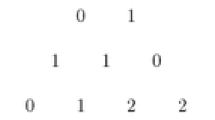Abstract
The Fermat–Euler progression of residues modulo n is a geometrical progression, formed by the powers of one residue, a. Such a sequence is always periodic, starting from some place. The object of study of the paper is the minimal period’s length T(a,n) of this progression.
For n residues a (modulo n) one obtains n values of the periods lengths T(a,n), and the corresponding Young diagram describes the partition of n residues a into the classes, for whose progressions the period’s length has a fixed value.
The study of these partitions and of their asymptotical behavior for n→∞ provides many unexpected phenomena, including, for instance, the enhancing of the divisibility properties of integers in the case, when these integers belong to the range set of the Euler’s function φ.
Similar content being viewed by others
References
Arnold VI (2009) Permutations. Russ Math Surv 64(4):583–624
Author information
Authors and Affiliations
Additional information
V.I. Arnold is deceased (1937–2010).
Rights and permissions
About this article
Cite this article
Arnold, V.I. Periods and Young’s diagram of Fermat–Euler’s geometrical progressions of residues. Funct. Anal. Other Math. 3, 21–38 (2010). https://doi.org/10.1007/s11853-010-0042-7
Received:
Accepted:
Published:
Issue Date:
DOI: https://doi.org/10.1007/s11853-010-0042-7
Keywords
- Small Fermat theorem
- Euler’s function
- Random permutations cycles
- Cesaro averaging
- Euler’s groups
- Random divisors statistics
- Gauss integers
- Complex prime numbers



